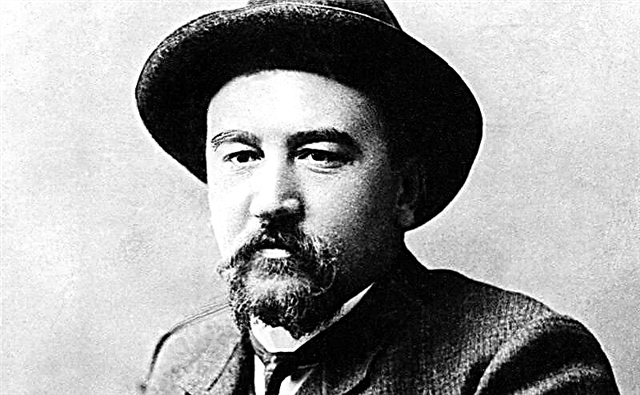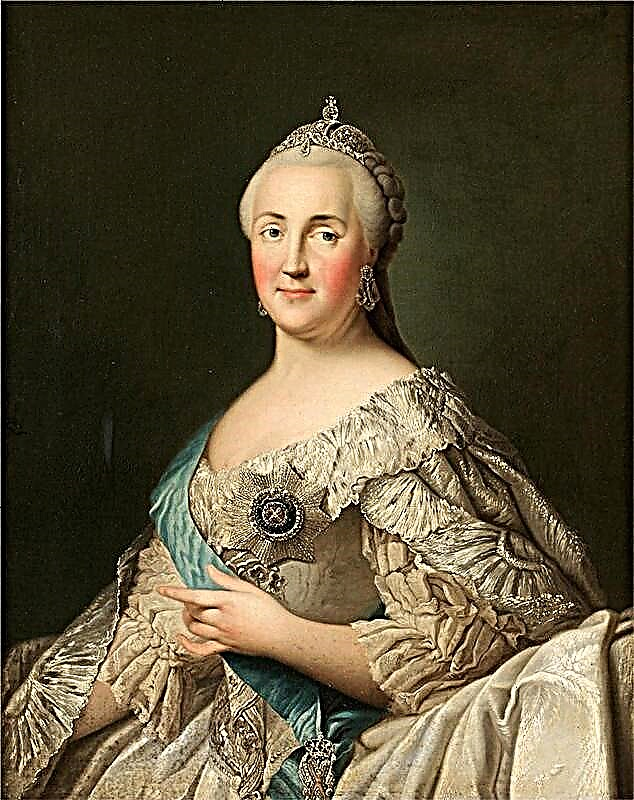Srinivasa Ramanujan Iyengor (1887-1920) - Indian mathematician, member of the Royal Society of London. Without a special mathematical education, he reached fantastic heights in the field of number theory. The most significant is his work with Godfrey Hardy on the asymptotics of the number of partitions p (n).
There are many interesting facts in Ramanujan's biography that will be mentioned in this article.
So, before you is a short biography of Srinavasa Ramanujan.

Ramanujan's biography
Srinivasa Ramanujan was born on December 22, 1887 in the Indian city of Herodu. He was raised and raised in a Tamil family.
The father of the future mathematician, Kuppuswami Srinivas Iyengar, worked as an accountant in a modest textile shop. Mother, Komalatammal, was a housewife.
Childhood and youth
Ramanujan was brought up in the strict traditions of the brahmana caste. His mother was a very devout woman. She read sacred texts and sang in a local temple.
When the boy was barely 2 years old, he fell ill with smallpox. However, he managed to recover from a terrible illness and survive.
During his school years, Ramanujan showed outstanding mathematical abilities. In knowledge, he was a cut above all his peers.
Soon, Srinivasa received from a student friend several works on trigonometry, which interested him very much.

As a result, at the age of 14, Ramanujan discovered Euler's formula for sine and cosine, but when he learned that it had already been published, he was very upset.
Two years later, the young man began researching a 2-volume Collection of Elementary Results in Pure and Applied Mathematics by George Shubridge Carr.
The work contained over 6000 theorems and formulas, which had practically no proofs and comments.
Ramanujan, without the help of teachers and mathematicians, independently began to study the stated formulas. Thanks to this, he developed a peculiar method of thinking with an original way of proof.
When Srinivasa graduated from the city's high school in 1904, he received a mathematics prize from the school's principal, Krishnaswami Iyer. The director introduced him as a talented and outstanding student.
During that period of his biography, Ramanujan appeared patrons in the person of his boss Sir Francis Spring, colleague S. Narayan Iyer and future secretary of the Indian Mathematical Society R. Ramachandra Rao.
Scientific activity
In 1913, a famous professor at Cambridge University named Godfrey Hardy received a letter from Ramanujan, in which he said that he had no education other than secondary.
The guy wrote that he was doing mathematics on his own. The letter contained a number of formulas derived by Ramanujan. He asked the professor to publish them if they seemed interesting to him.
Ramanujan clarified that he himself is not able to publish his work due to poverty.
Hardy soon realized that he was holding a unique material in his hands. As a result, an active correspondence began between the professor and the Indian clerk.
Later, Godfrey Hardy accumulated about 120 formulas unknown to the scientific community. The man invited 27-year-old Ramanujan to Cambridge for further cooperation.
Arriving in the UK, the young mathematician was elected to the English Academy of Sciences. After that, he became a professor at the University of Cambridge.

An interesting fact is that Ramanujan was the first Indian to receive such honors.
At that time, the biographies of Srinivas Ramanujan one by one published new works, which contained new formulas and proofs. His colleagues were discouraged by the efficiency and talent of the young mathematician.
From an early age, the scientist observed and deeply researched specific numbers. In some amazing way, he was able to notice a huge number of material.
In an interview, Hardy said the following phrase: "Every natural number was a personal friend of Ramanujan."
Contemporaries of the brilliant mathematician considered him an exotic phenomenon, 100 years late to be born. However, Ramanujan's extraordinary abilities amaze scientists of our time.
Ramanujan's field of scientific interests was immeasurable. He was fond of infinite rows, magic squares, infinite rows, squaring a circle, smooth numbers, definite integrals, and many other things.
Srinivasa found several particular solutions of the Euler equation and formulated about 120 theorems.
Today, Ramanujan is considered the greatest connoisseur of continued fractions in the history of mathematics. A lot of documentaries and feature films were shot in his memory.
Death
Srinivasa Ramanujan died on April 26, 1920 on the territory of the Madras presidency shortly after arriving in India at the age of 32.
Biographers of the mathematician still cannot come to a consensus regarding the reason for his demise.
According to some sources, Ramanujan could have died from progressive tuberculosis.
In 1994, a version appeared, according to which he could have amoebiasis, an infectious and parasitic disease characterized by chronic recurrent colitis with extraintestinal manifestations.
Ramanujan Photos












